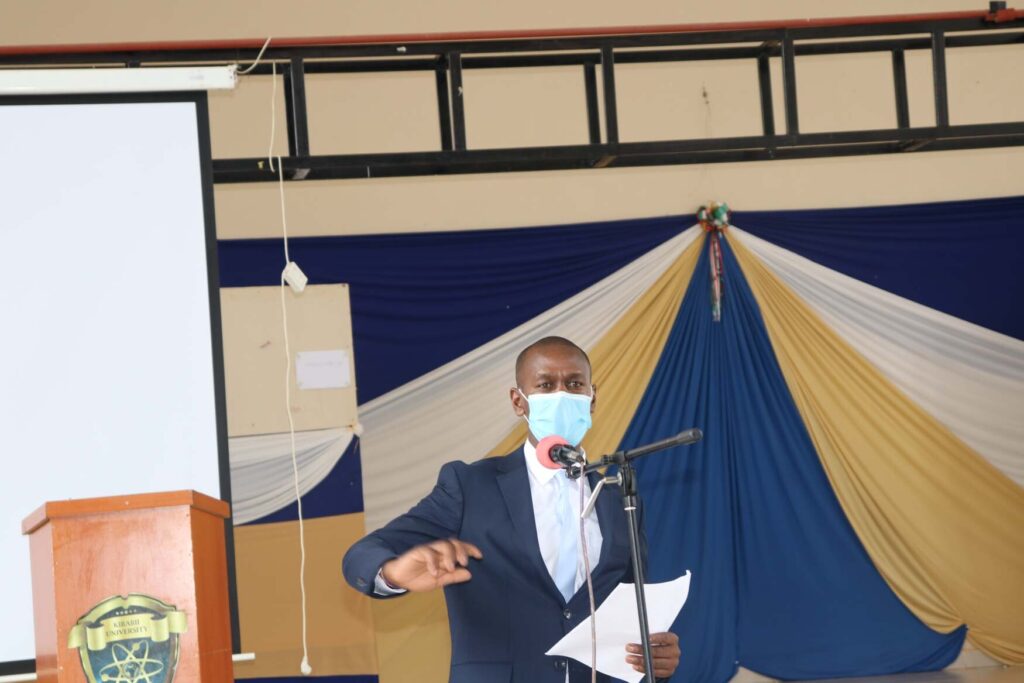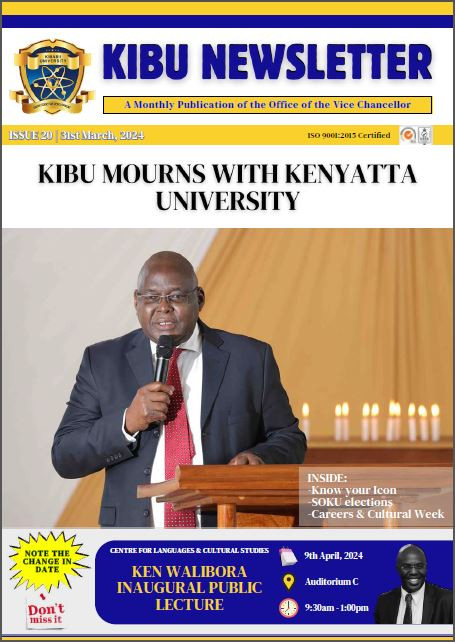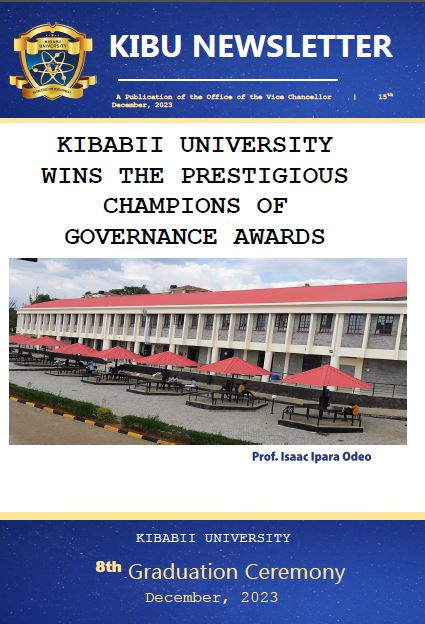
Kibabii University Disaster Management and Preparedness workshop was held on Thursday 18th February, 2021 in Auditorium C from 10.00am to 2. 00pm. The workshop which was coordinated by the Department of Security and Safety is a one of the series of sensitization events carried out by the University. It was facilitated by Bungoma County Police Inspector, George Muthoni and Bungoma County Fire and Rescue Officer, Davis Isaiah Khisa.
The main agenda of the workshop was to create awareness to the university’s members of staff on the types of disasters, how to prepare for the disasters and how to manage one in case of occurrence.
In his speech on terrorism and youth radicalization, Mr. George Muthoni highlighted on the causes of the upsurge in youth radicalization.
“Terrorism is committing criminal acts against civilians with the intention to cause injury or death or taking people hostage to provoke a state of terror to the general public or to a group of people and intimidate the government. Their major targets are buildings and locations which are economic or political symbols such as Embassies and critical installations. Another goal of terrorism is publicity and recognition. Terrorists use tactics such as hijacking, kidnapping, bombings, assassinations and any ruthless method of their advantage to further their agenda,” he said.
The first case of terrorism in Kenya was in 1975 and it has been a scene of various attacks since then. According to Inspector Muthoni, to stop terrorism, those funding terrorists should stop and the youth should be effectively counselled not to join terrorism groups.
The Fire and Rescue Officer, Mr. Khisa gave a detailed account on the causes of fires and firefighting techniques. “The combination of oxygen, heat and fuel automatically causes fire. Extinction is therefore achieved by breaking the chain of reaction between the bond of fuel, heat and oxygen,” he said.
There are five classes of fires;
- Class A fires are caused by ordinary combustible materials e.g., wood,
- Class B fires are caused by liquid combustible materials e.g., grease,
- Class C fires involve flammable materials e.g., gases,
- Class D fires involve flammable and inflammable metals and
- Class E fires are electrical fires.
There are five types of fire extinguishers; motor type extinguisher is used with class A fires, Horse ring extinguisher, carbon dioxide extinguisher serves well in class E fires, Dry chemical powder extinguisher works in all classes of fire, Aqueous extinguisher works in class B fires. A fire blanket can be used mostly in kitchen fires. Dry sand is also an extinguisher as it works the same way the chemical powder extinguisher works.
The Rules of Firefighting
- Assist any person in immediate danger to safety,
- Activate the building’s fire alarm or use your mouth as an alarm,
- Switch of electrical or solar systems to prevent the spread of fire,
- Use the available suitable equipment to prevent the spread of fire while awaiting the fire brigade to arrive and use a fire extinguisher only at the beginning of the fire,
- If the fire spreads rapidly, evacuate the building and close the doors and windows to prevent the spread.
- If you’re trapped inside a building move closer to the wall to avoid inhaling toxic gas.
- Do not try to fight the fire unless you have adequate or appropriate material to fight it.
- Stay low and don’t walk on top of a fire to avoid explosion.
- Spray the extinguisher only at the base of the fire.
- In case of a fire incident, never move to the scene before it has been inspected.
- Always have a back-up escape route before trying to use an extinguisher incase the spread of fire gets out of hand.
- Never go to unknown areas to fight fire as there could be explosives present.
- Make sure your extinguisher is ready for an emergency by having it inspected by an expert after every six months.
- Extinguishing fire by the fire brigade is a free service although when it comes to class B fires involving tankers there is a fee charged as components of air are used and they are expensive to acquire.
On the COVID 19 pandemic, Kibabii University’s Public Health Officer Mr. Wachira Njogu reminded of the causes, effects and measures of containment.
“COVID 19 is a pandemic as it was sudden and disrupted the globe’s normal functioning. It has caused human material, economic and environmental losses that exceed the world’s ability to cope with due to minimal resources. It was first discovered in China in 2019 and has since spread globally,” he said.
According to the World Health organization figures, the global infection rate has the US leading by approximately 28 million infections,18 million recoveries and 498 thousand deaths. Kenya has approximately 103 thousand infections, 85 thousand recoveries almost 1,700 deaths.
Although infections have gone down, the measures are still in place to prevent the spread. According to the Ministry of Health, vaccines will be administered from February starting with those at high infection risks such as medical personnel, security and those directly handling covid patients.
Prevention is by effective washing of hands regularly, using an alcohol-based hand sanitizers in absence of water, wearing a recommended face mask, maintaining social distance and maintaining respiratory hygiene which is coughing into a handkerchief or coughing into your elbow in absence of a handkerchief.





